After years of experimenting with alcohol-free drinks, I've finally created the perfect non-alcoholic limoncello spritz mocktail that will wow your guests every time. This incredibly simple 3-ingredient mocktail delivers all the bright, zesty flavors of traditional Italian limoncello without any alcohol.
The secret is my "lazy lemon syrup" that takes just minutes to prep but creates that distinctive limoncello magic overnight in your fridge. It's fizzy, perfectly tart-sweet, and so refreshing that everyone asks for the recipe.
This is the mocktail that makes people forget they're not drinking the real thing!

Why I Love This
- Incredibly Simple to Make - Just 3 core ingredients for a sophisticated mocktail
- Make-Ahead Friendly - Prepare the main ingredient in advance for instant assembly when guests arrive
- Customizable Sweetness - Easily adjust to your preference with more or less oleo saccharum
- Zero-Waste Approach - Uses both lemon juice and peels, minimizing food waste
- Perfect for Any Season - Refreshing in summer, yet bright enough to enjoy year-round
- Crowd-Pleaser - Easily scaled up for parties and gatherings
- Restaurant-Quality at Home - Impress guests with a drink that looks and tastes professional
- Health Benefits - Rich in vitamin C and antioxidants from fresh lemons
Ingredients
I chose these simple ingredients specifically to recreate the magic of traditional limoncello without alcohol. The lemon peels release essential oils when mixed with sugar, creating that distinctive limoncello flavor that can't be replicated with juice alone.
The sparkling water or non-alcoholic Prosecco adds the fizzy element that makes this a true "spritz" while keeping it light and refreshing. Everything in this recipe serves a purpose. There's nothing unnecessary, which is why it's so easy to make yet tastes so sophisticated.

For the Lemon Oleo Saccharum:
- 4-5 organic lemons - Ideally organic or homegrown for the peels (thoroughly wash if conventional)
- 1 cup white sugar (approximately - equal to peel by weight)
For Each Mocktail:
- 1-1.5 oz lemon oleo saccharum
- 1 cup lemon sparkling water or non-alcoholic Prosecco (unsweetened or low-sugar variety)
- 1 oz fresh lemon juice (optional but recommended for lemon lovers)
- Ice cubes
- Garnish: Lemon slice, thyme sprig, or rosemary (optional)
Equipment
- Vegetable Peeler - Essential for removing lemon peel without the bitter white pith
- Mason Jar - For preparing and storing your oleo saccharum
- Fine Mesh Strainer - Ensures a smooth syrup by removing all peel remnants
- Kitchen Scale (optional but recommended) - For precise sugar-to-peel ratio
- Large Wine Glass or Spritz Glass - The traditional vessel for serving this elegant drink
- Bar Spoon - For gentle stirring without disrupting carbonation
- Citrus Juicer - For extracting fresh lemon juice efficiently
- Ice Cube Tray - Large, clear ice cubes melt slower and look more elegant
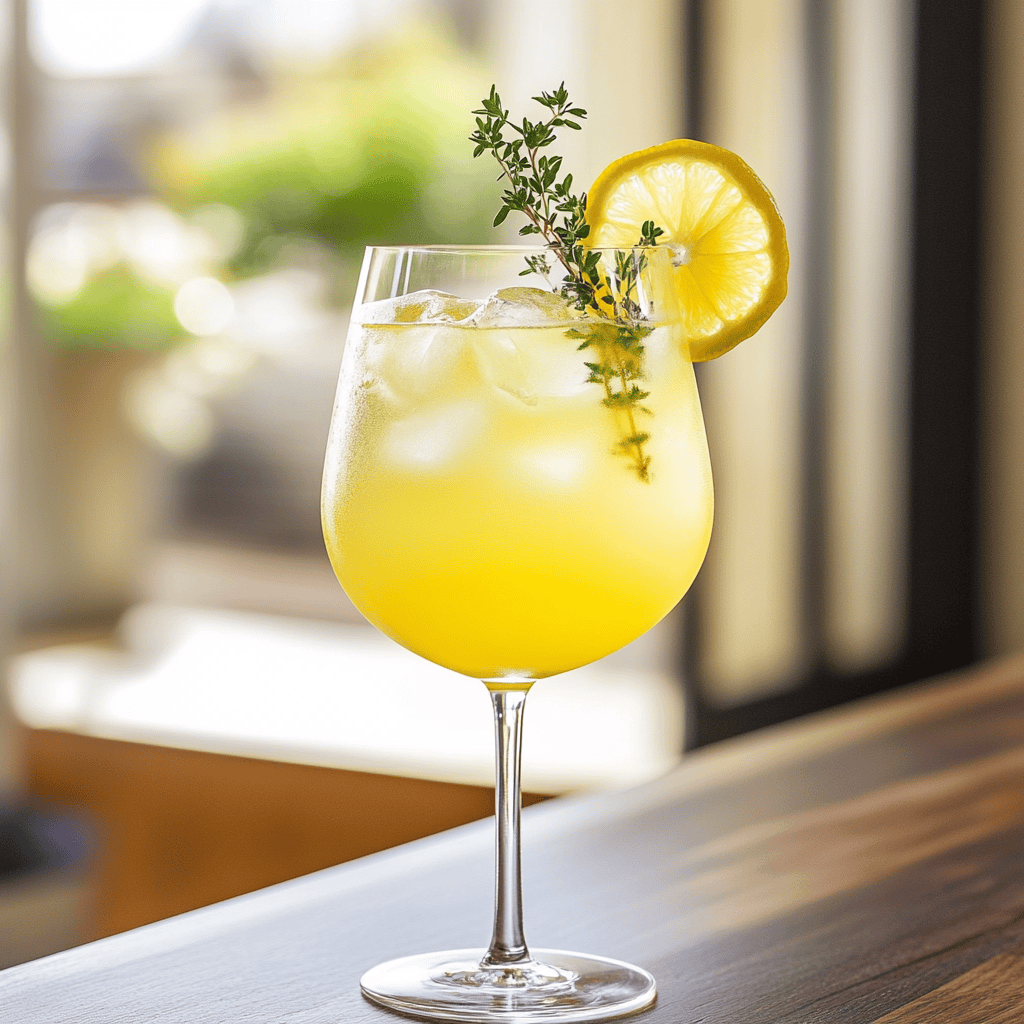
How To Make
- Make the lemon oleo saccharum the day before: Wash 4-5 lemons thoroughly and use a vegetable peeler to remove just the yellow peel, avoiding the white pith. Place the peels in a mason jar and add an equal weight of sugar (about 3 tablespoons per lemon). Stir gently, cover, and let sit at room temperature for 24 hours. The next day, strain the mixture through a fine mesh strainer, pressing down to extract all the syrup, and refrigerate.
- To make your mocktail: fill a large wine glass with ice and pour in 1-1.5 oz of your prepared lemon syrup. Add 1 cup of lemon sparkling water or non-alcoholic Prosecco, pouring slowly to preserve the bubbles. If you love extra lemony flavor, add 1 oz of fresh lemon juice. Gently stir and garnish with a lemon slice and sprig of thyme if desired.
- Serve immediately and enjoy!
Substitutions
- Meyer Lemons: Substitute regular lemons with Meyer lemons for a sweeter, more complex flavor profile.
- Citrus Variations: Try making oleo saccharum with orange, grapefruit, or lime peels for different flavor profiles.
- Sugar Alternatives: Replace white sugar with demerara or turbinado sugar for added depth and complexity.
- Sparkling Options: If you can't find lemon sparkling water, use plain sparkling water and increase the fresh lemon juice.
- Non-Alcoholic Prosecco Alternatives: Club soda with a dash of white grape juice can substitute in a pinch.
- Herb Infusions: Add a sprig of rosemary or thyme to your oleo saccharum for an herbal dimension.
- Sweetener Options: For those monitoring sugar intake, try a monk fruit/erythritol blend for the oleo saccharum (though results may vary).
- Flavor Enhancers: A few drops of orange blossom water or rose water can add surprising complexity.

Pro Tips
Quality Matters: Use the freshest lemons possible – farmers' markets often have unwaxed options that are ideal.
Peel Precision: Use a vegetable peeler rather than a zester for wider strips that are easier to remove from the syrup.
Room Temperature First: Always let the oleo saccharum process occur at room temperature to extract maximum flavor before refrigerating.
Chill Everything: Pre-chill your glasses and non-alcoholic Prosecco for maximum fizz retention.
Garnish Aromatics: Gently slap herb garnishes between your palms before adding to release aromatic oils.
Batch Preparation: For parties, multiply the recipe and keep oleo saccharum and lemon juice ready in squeeze bottles for quick assembly.
Proper Stirring: Always stir gently from the bottom up to maintain carbonation.

FAQ
The oleo saccharum can be stored in an airtight container in the refrigerator for up to 7 days. The high sugar content helps preserve it naturally.
While fresh is always best, you can use bottled lemon juice in a pinch for the additional 1 oz in the mocktail. However, always use fresh lemons for the oleo saccharum, as the oils in the peel are essential.
Look for dry or low-sugar varieties. Brands like Lyre's, Thomson & Scott Noughty, and Freixenet 0.0% offer excellent options that provide the authentic Prosecco experience without alcohol.
Yes! This is a completely alcohol-free recipe, making it perfect for pregnant women, designated drivers, or anyone avoiding alcohol.
Absolutely! The oleo saccharum can be made in large batches several days ahead. For serving, consider setting up a DIY bar station with pre-measured oleo saccharum in small containers, bottles of non-alcoholic Prosecco, and garnishes.
Oleo saccharum (literally "oil sugar" in Latin) has been used since the 17th century in cocktails and punches. It's a traditional method bartenders use to extract essential oils from citrus peels.
Absolutely! The juice from the peeled lemons is perfect for the optional extra lemon juice in the mocktail, or you can use it for cooking, baking, or making lemonade.
Blend the oleo saccharum and fresh lemon juice with ice, then top with a splash of non-alcoholic Prosecco for a refreshing frozen treat.
Related
Looking for other recipes like this? Try these:
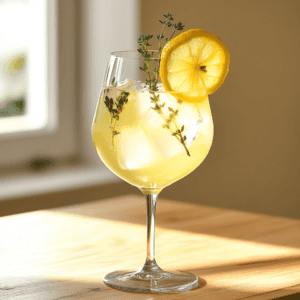
Refreshing Non-Alcoholic Limoncello Spritz Mocktail
Ingredients
For the Lemon Oleo Saccharum:
- 4-5 organic lemons - Ideally organic or homegrown for the peels thoroughly wash if conventional
- 1 cup white sugar approximately - equal to peel by weight
For Each Mocktail:
- 1-1.5 oz lemon oleo saccharum
- 1 cup lemon sparkling water or non-alcoholic Prosecco unsweetened or low-sugar variety
- 1 oz fresh lemon juice optional but recommended for lemon lovers
- Ice cubes
- Garnish: Lemon slice thyme sprig, or rosemary (optional)
Instructions
- Make the lemon oleo saccharum the day before: Wash 4-5 lemons thoroughly and use a vegetable peeler to remove just the yellow peel, avoiding the white pith. Place the peels in a mason jar and add an equal weight of sugar (about 3 tablespoons per lemon). Stir gently, cover, and let sit at room temperature for 24 hours. The next day, strain the mixture through a fine mesh strainer, pressing down to extract all the syrup, and refrigerate.
- To make your mocktail, fill a large wine glass with ice and pour in 1-1.5 oz of your prepared lemon syrup. Add 1 cup of lemon sparkling water or non-alcoholic Prosecco, pouring slowly to preserve the bubbles. If you love extra lemony flavor, add 1 oz of fresh lemon juice. Gently stir and garnish with a lemon slice and sprig of thyme if desired. Serve immediately and enjoy!
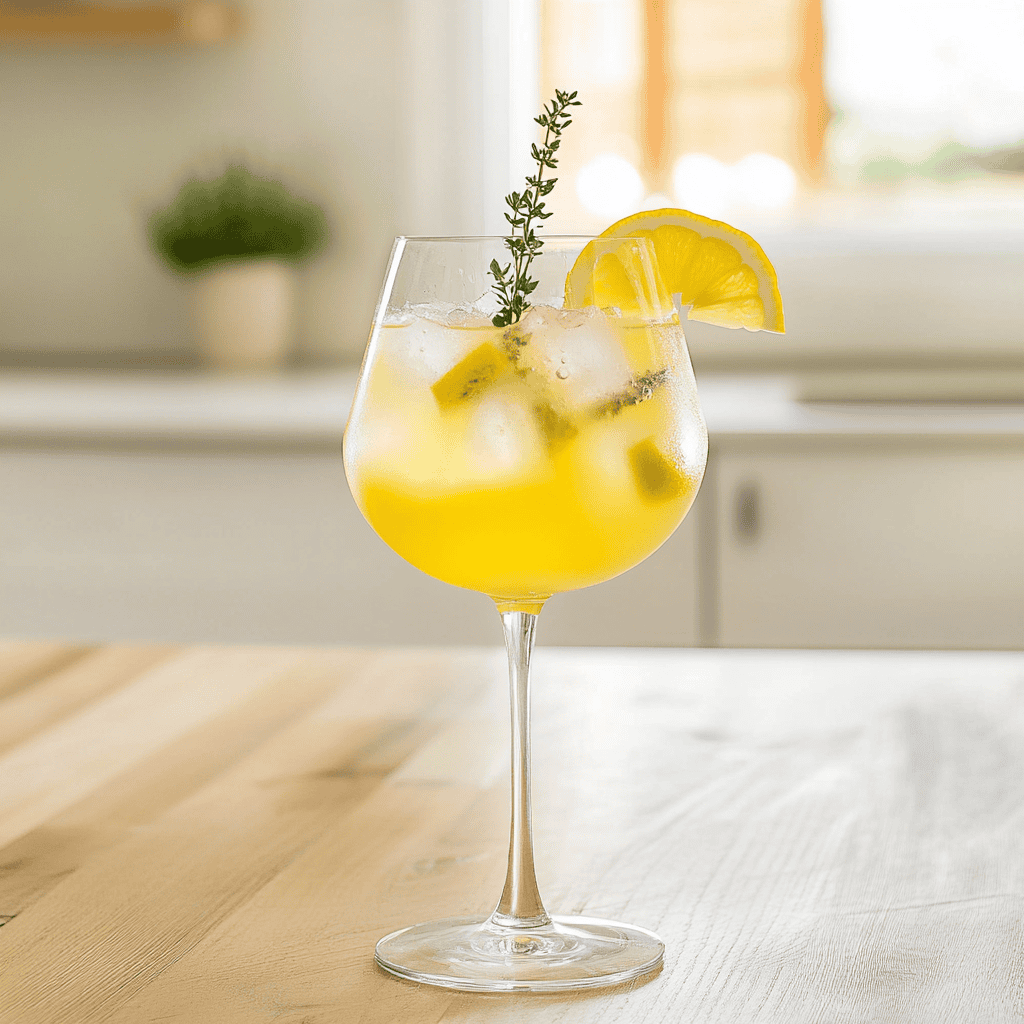


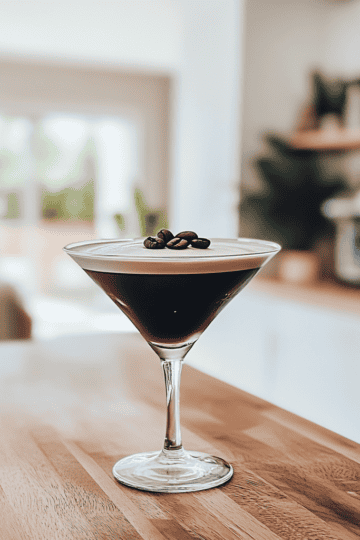





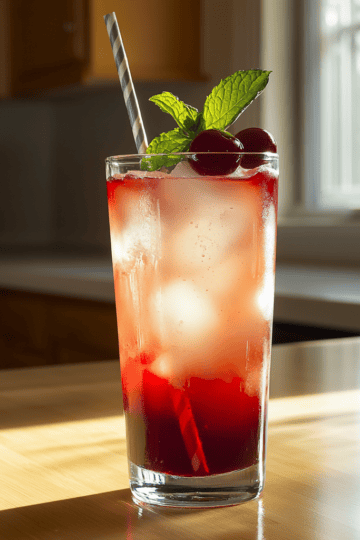
Comments
No Comments